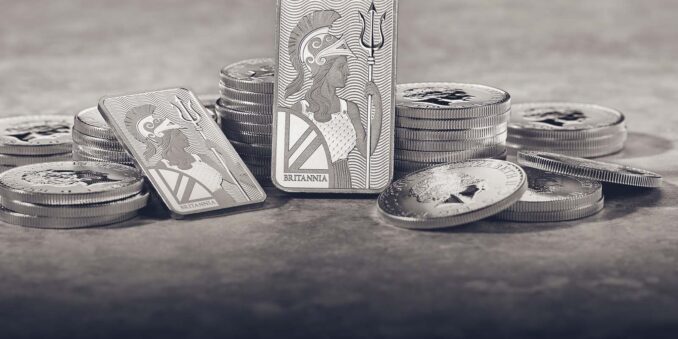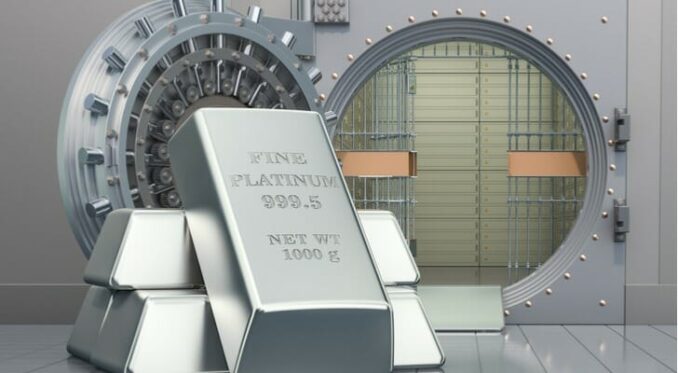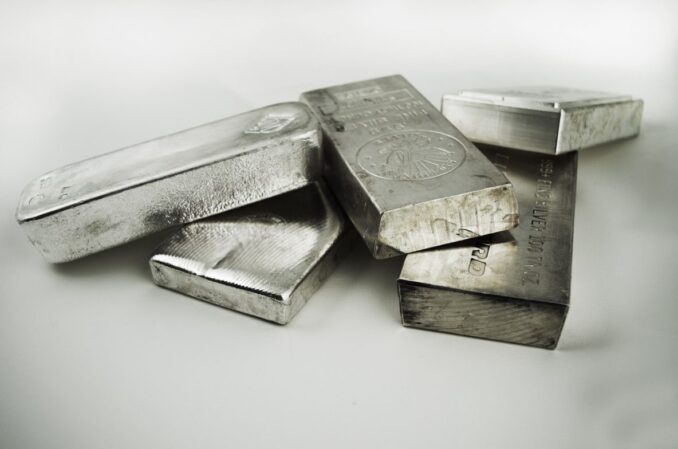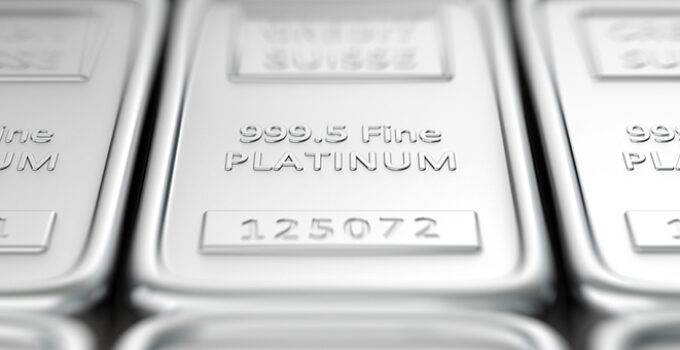Platinum is one of the rarest and most valuable precious metals in the world. As a result, it has long been considered an attractive investment option for those seeking to diversify their portfolio and hedge against inflation. Platinum bullion, in particular, is a popular way to invest in the metal as it provides investors with a physical asset that can be easily stored and traded.
However, as with any investment, it is important to carefully consider the potential risks and benefits of investing in platinum bullion. In this article, we will examine some of the key factors to consider when deciding whether a platinum bullion investment is right for you.
Factors to Consider when Investing in Platinum Bullion

Source: royalmint.com
Historical Performance of Platinum
Platinum has historically been a valuable and rare precious metal, and its price has fluctuated over time. One factor to consider when investing in platinum bullion is its historical performance, which can provide insights into potential price movements and market trends. Historical data can also help you make informed decisions about the best time to buy or sell platinum bullion.
Supply and Demand Dynamics
Similar to other commodities, the price of platinum is primarily determined by the supply and demand dynamics in the market. Investors should consider factors such as global mining production, the availability of recycled platinum, and industrial demand for the metal. Understanding these supply and demand factors can help you anticipate price movements and make informed investment decisions.
Industrial Demand for Platinum
Platinum is widely used in the automotive industry, as well as in electronics, jewelry, and other industrial applications. Understanding current and potential future demand for platinum can help investors evaluate the long-term outlook for the metal and anticipate potential price changes.
Market Volatility and Risk Management
As with any investment, investing in platinum bullion carries some degree of risk. The platinum market can be volatile, with prices subject to sudden shifts in response to global economic, political, and environmental events. Investors need to understand these risks and develop strategies for managing them, such as diversifying their portfolios and setting stop-loss orders.
Liquidity of Platinum Bullion
Investors who choose to invest in platinum bullion should also consider the liquidity of their investment. Platinum bullion can be relatively illiquid, meaning that it may be difficult to sell quickly if the need arises. Additionally, investors should be aware of any fees or premiums associated with buying and selling platinum bullion and factor these into their investment decisions.
Advantages and Disadvantages of Investing in Platinum Bullion

Source: vocal.media
Pros of Investing in Platinum Bullion
Portfolio Diversification
Investing in platinum bullion can provide investors with an opportunity to diversify their investment portfolio. Adding platinum bullion to an investment portfolio that already includes stocks, bonds, and other assets can help to spread risk and reduce the impact of market volatility on overall portfolio performance.
Inflation Hedging
Platinum bullion can also serve as an inflation hedge. Unlike paper currency, which can lose value over time due to inflation, the value of platinum bullion typically rises with inflation. Investing in platinum bullion can help to protect against the eroding effects of inflation on the value of your assets.
Physical Asset Ownership
Investing in platinum bullion allows investors to own a physical asset that can be stored and accessed at their discretion. Owning physical platinum bullion can provide a sense of security and control over your investments, as well as the flexibility to sell or trade the metal as needed.
High Industrial Demand
Platinum is a critical component in a wide range of industrial applications, particularly in the automotive industry. This means that demand for platinum is likely to remain strong, regardless of fluctuations in the financial markets. Investing in platinum bullion can provide exposure to this industrial demand, potentially leading to long-term price appreciation.
Potential for Price Appreciation
Like any investment, investing in platinum bullion carries some degree of risk. However, platinum has a history of being a valuable and rare precious metal. As such, investing in platinum bullion can offer the potential for long-term price appreciation. Investors who are willing to hold platinum bullion for an extended period may be able to realize significant returns on their investment.
Cons of Investing in Platinum Bullion

Source: smartasset.com
Market Volatility
Investing in platinum bullion can be subject to market volatility, just like any other investment. Several factors can impact the price of platinum, including shifts in global economic conditions, geopolitical events, and changes in the supply and demand dynamics of the market. This volatility can make platinum bullion a risky investment for some investors.
Limited Liquidity
Platinum bullion can be less liquid than other investments, such as stocks or bonds. This means that selling platinum bullion may take more time and effort, and investors may not be able to quickly access the full value of their investment if needed.
Higher Premiums and Fees
Investing in platinum bullion typically involves paying a premium over the spot price of platinum. In addition, investors may need to pay fees for storage and insurance of their platinum bullion. These higher costs can reduce potential returns on investment and may make platinum bullion less attractive to some investors.
Environmental and Social Risks in Mining
Platinum mining can have significant environmental and social impacts, including air and water pollution, deforestation, and displacement of indigenous communities. Some investors may be hesitant to invest in platinum bullion due to concerns about these environmental and social risks.
Potential for Price Depreciation
While investing in platinum bullion can offer the potential for price appreciation, it can also carry the risk of price depreciation. Changes in supply and demand dynamics, as well as economic and geopolitical events, can cause the price of platinum to decline. Investors who are not prepared to hold platinum bullion for an extended period may face losses if the price of platinum declines.
Conclusion

Source: goldsmart.co.nz
Investing in platinum bullion can offer several potential benefits, including portfolio diversification, inflation hedging, and physical asset ownership. Platinum also has a high industrial demand, which can support its value. However, investing in platinum bullion can also carry risks, such as market volatility, limited liquidity, and environmental and social risks associated with platinum mining. Before investing in platinum bullion, investors should carefully consider these factors and assess whether platinum bullion aligns with their investment goals and risk tolerance. As with any investment, it is important to conduct thorough research and seek professional advice before making any investment decisions.





